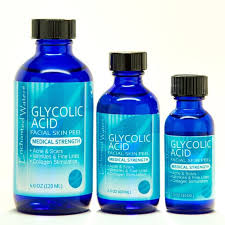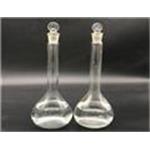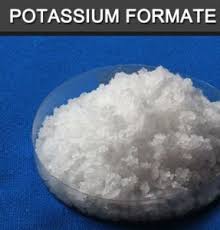Applications of Glycolic Acid
Nov 21,2019
Glycolic acid is the smallest alpha-hydroxy acid with the chemical formula C2H4O3. This hygroscopic crystalline solid is colorless and odorless as well as highly soluble in water. Glycolic acid is relatively stronger than acetic acid, owing to its greater electron withdrawing power of the terminal OH group.
History
Glycolic acid was first named by French Chemist Auguste Laurent in 1848. Glycolic acid was first prepared by German chemist Adolph Strecker and Russian chemist Nikolai Nikolaevich Sokolov in 1851.

They produced glycolic acid by forming ester of glycolic acid by treatment of hippuric acid with nitrogen dioxide and nitric acid. The ester was boiled with dilute sulfuric acid for days, which ultimately resulted in glycolic acid.
Preparation
Glycolic acid can be prepared through numerous ways. The main methods involve a low-cost catalyzed reaction of formaldehyde with synthesis gas. This chemical compound can also be prepared by the reaction of sodium hydroxide with chloroacetic acid, which is followed by re-acidification.
Other methods include hydrolysis of cyanohydrin and hydrogenation of oxalic acid. Enzymatic biochemical process is also used to prepare glycolic acid. Glycolic acid is produced during the photorespiration of plants, such as pineapple, cantaloupe, sugarcane, grapes and sugar beets.
Applications
Glycolic acid finds applications in numerous industries. It is used as a dyeing and tanning agent in the textile industry. In the food processing industry, it is used as a preservative and a flavoring agent.
This chemical compound is used in plastics, adhesives, solvents, emulsion polymers, additives of paint and ink. Glycolic acid is an important active ingredient in floor cleaning products such as pine-sol.
In the pharmaceutical industry, glycerol finds applications in skin care products like chemical peel. It is an important intermediate for organic synthesis and a wide range of reactions such as long chain polymerization, esterification and oxidation-reduction.
Glycolic acid is used as a monomer for the preparation of copolymers like polyglycolic acid.
Safety
This chemical compound is a strong irritant, which varies according to the ph. Ingestion of glycol can be lethal due to its metabolization to oxalic acid.
- Related articles
- Related Qustion
- Glycolic Acid: A Comprehensive Overview of Its Production, Composition, and Applications in Chemistry May 22, 2024
Glycolic acid, a pivotal substance in the field of industrial and cosmetic chemistry, is widely recognized for its versatile properties and applications.
- Preparation of Glycolic acid Oct 21, 2023
Glycolic acid is usually produced by hydrolysis of molten monochloroacetic acid with 50 % aqueous sodium hydroxide at 90 – 130℃.
- Efficacy of Glycolic acid Mar 9, 2022
Glycolic acid is a water-soluble alpha hydroxy acid (AHA) made from sugar cane. It is one of the most widely used AHAs in skincare products.
Hypericin is a naturally occurring substance found in the common St. John's Wort (Hypericum species) and can also be synthesized from the anthraquinone derivative emodin. As the main component of Hypericum perforatum, it has traditionally b....
Sep 19,2019Biochemical EngineeringPotassium Formate is a useful chemical compound in the production of potassium metal and in the oil and gas industry, often in aqueous solution (alone, or mixed with cesium formate), to yield a high-density, environmentally-friendly brine t....
Sep 20,2019Organic ChemistryGlycolic acid
79-14-1You may like
- Benzhydrol:Melting point,Uses,Hazards
Mar 22, 2024
- What is Methoxypolyethylene glycol amine used for?
Mar 14, 2024
- What is 1,2-Dioleoyl-sn-glycero-3-phosphoethanolamine?
Mar 14, 2024
- Glycolic acid
-

- $0.00 / 25KG
- 2024-06-11
- CAS:79-14-1
- Min. Order: 1KG
- Purity: 99%
- Supply Ability: 1000mt
- Glycolic acid
-

- $1.00 / 1g
- 2024-06-10
- CAS:79-14-1
- Min. Order: 1g
- Purity: 99%
- Supply Ability: 1000kg
- Glycolic acid
-

- $1.00 / 250kg
- 2024-06-04
- CAS:
- Min. Order: 1000kg
- Purity: 70% solution
- Supply Ability: 4000 mt





